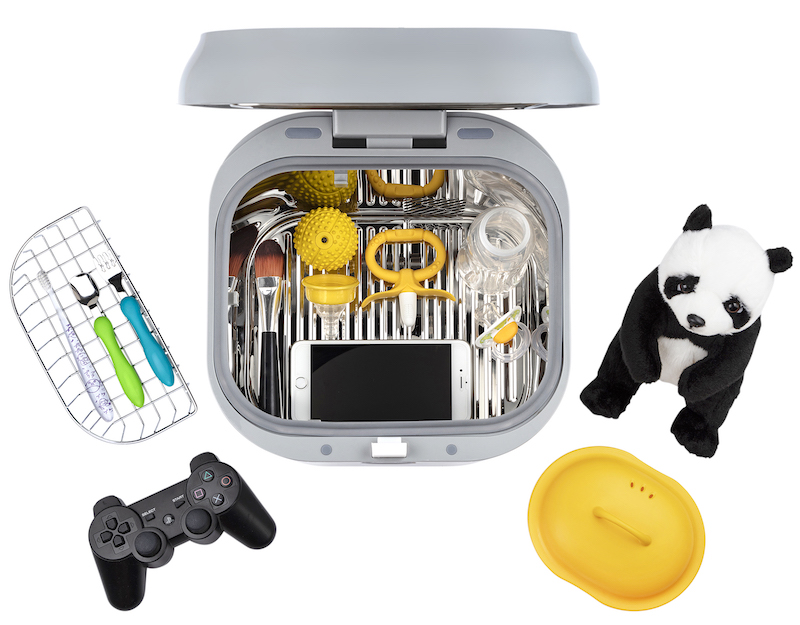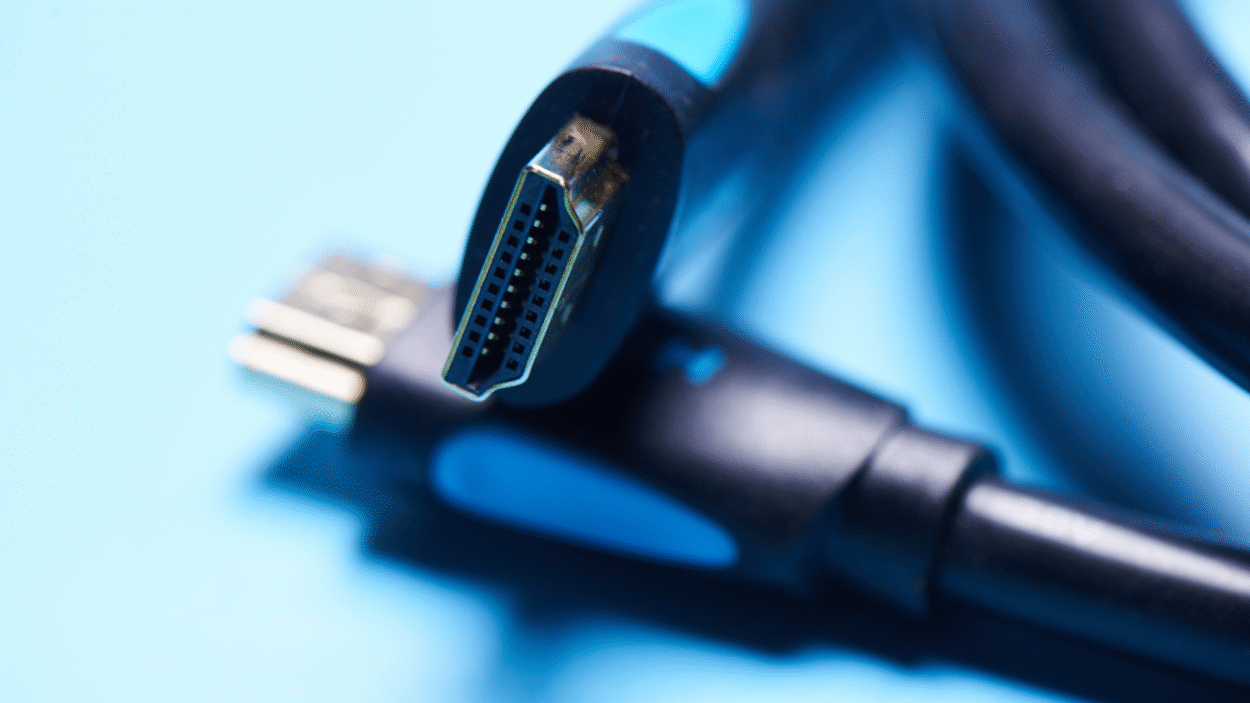According to the Cone Health Medical Group (CHMG), which consists of more than 500 physicians and providers in North Carolina, “Americans spend nearly $5 billion each year on illness caused by germs. Germs lie in wait on surfaces, having been left there by something or someone that is infected. Our hands come in contact with the surface and we then touch our eye, mouth or nose, allowing the germs to enter our bodies, making us ill.”
Voice assistants have greatly reduced the need to make physical contact with devices in a smart home to control them. Using a voice assistant, you can:
- Turn lights on and off
- Adjust a thermostat
- Play music
- Unlock or lock a door
- Control a connected kitchen appliance
- And much more…
However, people in a smart home still manually operate their lights using the switches on walls, use the buttons on the thermostat to make it warmer or cooler, manually unlock or lock doors, operate a smart appliance using its front panel controls, etc. They do these things even though they risk the transmission of illnesses through shared contact with these devices.
People in a smart home will also use smart phones, tablets, and hand-held remotes to control the smart systems in their home. And, sharing these devices can further lead to the spread of germs among family members and visitors.
So, it isn’t that a smart home itself will make you sick (in spite of what some conspiracy theorists will tell you), but the surfaces of smart devices in a home can be the source of infections spreading among the people in the home.
Disinfecting some surfaces in a smart home to minimize the transmission of germs is just as easy as in a home that isn’t smart. For example, a simple disinfecting wipe can be used to disinfect light switches in a home. However, cleaning smart phones, tablets and other electronic devices, that could be damaged by the harsh chemicals used in these wipes, is much more challenging.
Killing Germs Using UV-C Light
Ultra-Violet light is invisible to the human eye. It is divided into three bands: A, B, C. UV-C light kills germs by breaking down a germ’s DNA so it cannot reproduce and cause illness.
UV-C light is widely used in hospitals to minimize the spread of disease. It is used to disinfect operating rooms and patient rooms, to keep the air free from germs, and within specialized disinfecting cabinets for cleaning the surfaces of object placed within the cabinet.
Coral UV Sterilizer and Dryer
The Coral UV Sterilizer and Dryer uses UV-C light to sterilize household items and kill 99.9 percent of harmful bacteria and viruses in just 10 minutes. Unlike smaller, cell phone sterilizers, it’s 10- x 8- x 7.5-inch internal capacity is large enough to sterilize a standard-size iPad or the vast majority of remote controls. It is even large enough to fit any of the universal remote controls that I have worked with.
The Coral UV Sterilizer and Dryer is designed to sterilize more than just electronic equipment. It can sterilize anything from baby bottles to plushy toys. When sterilizing items, other than electronic equipment, it includes a dryer function so, for example, baby bottles, along with their lids and nipples, can be washed and then placed directly into the Coral UV Sterilizer and Dryer.
Unlike smaller sterilizers, the Coral UV-C Sterilizer and Dryer includes two UV-C bulbs, rather than just one. In addition, the interior of the sterilizer is highly reflective to assure the UV-C light reaches all sides of the objects placed into it.
The Coral UV-C Sterilizer and Dryer uses Philips UV-C bulbs. Philips is a leader in UV-C sterilization technology. They have more than 35 years of experience in developing and manufacturing UV-C bulbs. In addition, their lamps include a unique coating that assures the lamp never drops below 85-percent output for the life of the bulb.
UV-C bulbs do wear over time, and the intensity of the light they produce diminishes. The Coral UV-C Sterilizer and Dryer includes two indicator lights – one for each bulb. If one of these indicator lights doesn’t illuminate when a sterilization cycle is started, the associated bulb needs to be replaced. In any case, Coral recommends that the bulbs should be replaced each year to maintain the device’s ability to kill 99.9 percent of germs. Bulbs are reasonably inexpensive, and replacements can be purchased on the Coral UV web store here.
Another thing that separates the Coral UV-C Sterilizer and Dryer from competing products is the testing process it has gone through. The Coral UV-C Sterilizer and Dryer has been submitted to multiple testing firms to assure that it both kills 99.9 percent of germs and that it is electrically safe for homeowners to operate. Reports from each testing firm are available for public review on the Coral UV web site.
Hands-On with the Coral UV-C Sterilizer and Dryer
I had the opportunity to try the Coral UV-C Sterilizer and Dryer. It includes four operating modes.
- 10-, 15-, or 20-minute sterilization cycle
- 10-minute sterilization followed by a 40-, 50-, 60-, or 70-minute dry cycle
- 30-, 40-, 50-, or 60-minute dry-only cycle
- 24-hour storage cycle that performs a 50-minute sterilization/dry cycle followed by 2-minute sterilization cycles every two hours for up to 24 hours. This is useful for keeping baby bottles and breast pump parts free of germs.
Only the sterilization cycle would be used for electronic devices. However, the additional operating modes make this device more useful for families with young children.
There are four buttons on the top of the unit’s cover to select which of the above operating modes you want. Each time you press one of the buttons, it selects the associated mode and cycles to a different run time. The current running time is displayed on the top of the units, making it easy to see which one you’ve selected. A few seconds after you stop pressing the button, the unit automatically starts running.
To assure that any remaining germs that might have survived during the sterilization process aren’t spread into the home during the dry cycle, the Coral UV-C Sterilizer and Dryer has a replaceable HEPA filter. Coral recommends changing the filter after every three months (depending on use), and three replacement filters are included with the product.
There is plenty of space inside the Coral UV-C Sterilizer and Dryer, and a wire basket is included that can help increase the capacity of the unit. My iPad easily fit by placing it diagonally inside.
To give the Coral UV-C Sterilizer and Dryer a true test outside of a lab, I had to purchase some laboratory equipment. In this case, I purchased some Petri dishes with agar growth media and sterile swabs. I rubbed one of the swabs on my iPhone’s screen to collect any germs on the screen and then rubbed it against the agar to transfer the germs to the growth media. Then I sealed the Petri dish and set it aside.
Next I placed my iPhone in the Coral UV-C Sterilizer and Dryer and ran a standard 10-minute sterilization cycle. Once the cycle was complete, I took a second sterile swab, rubbed it on my iPhone’s screen, and rubbed it on the agar growth media in a second Petri dish. I sealed the second Petri dish and put both inside a cabinet so they had a nice dark environment for germs to grow.
After a week I took the two Petri dishes out of the cabinet and compared them. What you would expect is that the first Petri dish would have a lot of growth and the second would have minimal growth.
As you can see in the image above, after a few days the Petri dish marked “1” that was swabbed before sterilization of the iPhone has started growing lots of bacteria. The other Petri dish marked “2,” which was swabbed after the iPhone was sterilized, doesn’t show any growth. Clearly the Coral UV-C Sterilizer and Dryer is doing its job!
The Coral UV-C Sterilizer and Dryer is a very useful device during these challenging times. It is easy to use and has the capacity to sterilize your smart phone, many tablets, reusable face masks, and other household items.









